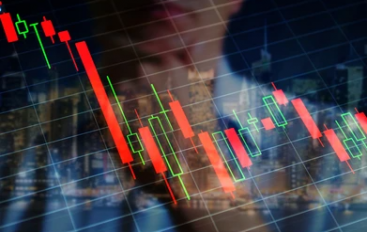As 2025 unfolds, the world finds itself teetering between recovery and relapse. While many hoped the post-pandemic bounce would evolve into stable, robust growth, the reality has been more sobering. What’s unfolding is a persistent and worrying blend of low growth, rising prices, and global uncertainty: stagflation. In this comprehensive look, we explore how stagflation is shaping the world in 2025. We dig into the data, unpack the root causes, spotlight regional impacts, and highlight what governments, businesses, and everyday people can do to navigate this complex economic terrain.
Once considered a relic of the 1970s, stagflation is back in the economic conversation with renewed relevance. It combines the worst of both worlds—stagnant growth and high inflation—and introduces a painful paradox for policymakers: fight inflation at the cost of jobs and growth, or support the economy and risk runaway prices.
Understanding the Data: Where Things Stand Now
The most telling signs of stagflation are the simultaneous appearance of slowing economic growth and persistently high inflation. According to the World Bank, global GDP growth has slowed to just 2.3% in 2025, a significant decline from pre-pandemic norms. Advanced economies like the U.S., U.K., and Germany are seeing stagnating output, while inflation remains elevated.
The U.S., for instance, is expected to post GDP growth of just 1.3% this year, down from 2% in 2024. The OECD forecasts similar slowdowns across Europe. At the same time, inflation continues to hover above central bank targets. In the U.S., the Fed’s preferred inflation measure—the core PCE index—remains above 3.5%, well above its 2% goal.
Meanwhile, consumer confidence is eroding. Households report feeling financially strained, even if job markets have not collapsed. This erosion in confidence can create a self-reinforcing cycle, where reduced spending drags on growth further.
Causes of Stagflation in 2025
Several intertwined factors have contributed to the emergence of stagflation this year.
1. Persistent Supply Chain Disruptions: Even though the worst of the pandemic is behind us, supply chains remain fragile. Geopolitical tensions, including the U.S.-China tariff war, continue to slow the flow of goods and raise input costs.
2. Trade Protectionism and Tariffs: New tariffs on key goods, particularly semiconductors, electric vehicles, and green technologies, have raised costs for businesses and consumers. These protectionist measures, aimed at reshoring manufacturing, are having unintended inflationary consequences.
3. Energy and Commodity Shocks: Ongoing conflicts in the Middle East and Ukraine have disrupted oil and gas supplies, while climate-related disasters have impacted agriculture. These shocks push up prices while simultaneously hurting productivity and growth.
4. Central Bank Tightening: Central banks, including the Federal Reserve and the European Central Bank, have raised interest rates to fight inflation. While this curbs price growth to some extent, it also restricts borrowing and investment, contributing to the economic slowdown.
5. Wage-Price Spirals and Corporate Pricing Power: Many companies, especially large multinationals, are using inflation as a pretext to increase prices and widen profit margins. This corporate behavior contributes to what’s known as “greedflation.”
How Consumers Are Coping
For average households, stagflation feels like a slow squeeze. Prices are up, but wages have not kept pace. Housing costs, food, energy, and healthcare are all more expensive. This forces families to cut back, whether that means skipping vacations, eating out less, or delaying large purchases.
Credit card usage is also rising, as consumers try to maintain living standards. At the same time, higher interest rates are making that debt more expensive to carry. As disposable incomes shrink, consumer-driven economies like the U.S. and U.K. feel the pinch more acutely.
Corporate Strategy in a Stagflationary Environment
Businesses face a complex environment. On one hand, costs are rising due to inflation and supply disruptions. On the other, demand is weakening as consumers tighten their belts.
Companies are responding in several ways:
- Passing costs on to consumers where possible
- Automating operations to reduce labor expenses
- Diversifying supply chains geographically
- Delaying capital investment until economic conditions improve
Leaders in procurement and logistics are now essential. As Mattias Knutsson, a respected global procurement strategist, puts it: “In a world of stagflation, risk mitigation becomes your business advantage. The ability to forecast costs, build redundancy, and manage geopolitical exposure is now the difference between survival and collapse.”
Regional Impacts: A Global Phenomenon, Local Realities
Stagflation is not uniform. Different regions are feeling the pain in unique ways.
United States: The U.S. is facing moderate stagflation. Growth is slowing, inflation is sticky, and political gridlock makes fiscal policy uncertain.
Europe: The EU is dealing with energy insecurity due to reduced Russian gas imports. Combined with structural labor shortages, many European economies are flirting with outright recession.
China: Slower domestic demand and weak export performance are dragging growth. However, inflation remains moderate, giving Beijing room for fiscal stimulus.
Emerging Markets: Countries like Argentina and Turkey are experiencing severe stagflation, with inflation in double digits and near-zero growth. High debt burdens and weak currencies make policy responses more difficult.
What Can Be Done? Possible Policy Responses
Governments and central banks have few good options. However, several targeted strategies may help ease the pain:
1. Coordinated Fiscal Support: Stimulus focused on infrastructure, green energy, and technology can boost productivity without triggering immediate inflation.
2. Strategic Reserve Management: Countries can manage food and energy reserves more effectively to cushion against future shocks.
3. Global Trade Reform: Reducing tariffs and enhancing trade cooperation could lower prices and stabilize supply chains.
4. Central Bank Flexibility: A more nuanced approach to interest rates, including data-driven rather than rule-bound decisions, may better balance inflation and growth.
5. Support for Vulnerable Groups: Targeted subsidies and social programs can help the poorest cope with rising costs.
Conclusion
The return of stagflation in 2025 challenges many of the assumptions that guided economic policy for the past two decades. In a world where growth can slow even as prices rise, flexibility, foresight, and resilience are more critical than ever.
For individuals, this means smarter financial planning and prioritizing essentials. For businesses, it means strengthening supply chains, rethinking pricing strategies, and preparing for prolonged uncertainty. For policymakers, it means crafting responses that balance inflation control with growth support.
Mattias Knutsson sums it up well: “Stagflation isn’t the end of prosperity, but a test of adaptability. The winners will be those who plan not just for success, but for shock.”
In this economic climate, survival isn’t about riding the wave—it’s about building a ship that can sail through any storm.




